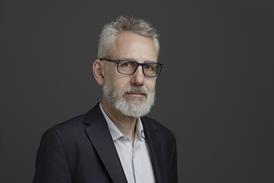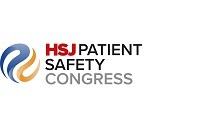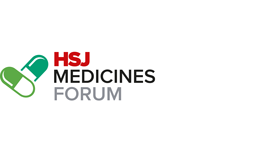Advances in stroke research mean recovery chances are a world apart from where they were 20 years ago, write Tony Rudd and Clare Walton
Twenty years ago hospital stroke care was starkly different. There were no stroke specialists, very few stroke units and no guidelines for healthcare professionals on treating stroke.
Little research had been carried out into the condition, and the majority of people held the belief that if you’d had a stroke there was nothing anyone could do. No sense of urgency was placed on getting the stroke patient to hospital, with many GPs keeping stroke patients home for bed rest.
‘Many patients do not have access to lifesaving thrombolytic treatments 24 hours a day, seven days a week’
If you did turn up at hospital, the likelihood would be that you would be sent home with an aspirin, or admitted to a general ward where doctors would treat you based on their own protocols and experiences and rarely with any sense of purpose or urgency.
Since then there have been tremendous developments; today we witness more people walking out of hospital following their stroke and returning to a fulfilling life than ever before.
These improvements are largely thanks to increased support for stroke research from the government, charities and the pharmaceutical industry over the last 20 years.
Poor access
For example, outcomes from research led to the development and introduction of specialised stroke units, the use of clotbusting thrombolytic drugs, and the development of the Face Arm Speech Time (F.A.S.T.) awareness campaign, which has led to wider recognition of stroke as a medical emergency.
Furthermore, stroke is now seen as a medical specialism and doctors are given the opportunity to train as specialist stroke physicians – an option which was not available to them within the NHS 10 years ago.
So what does acute stroke care look like at the moment? The latest results from the Royal College of Physicians’ Stroke Improvement National Audit Programme show that emergency care is the best it has ever been:
- 65 per cent of stroke patients are now treated on a dedicated stroke unit and receive specialist care from a co-ordinated team. This is an 18 per cent increase on the same quarter last year.
- 67 per cent of patients eligible to receive clot busting drugs are now getting them. This is a 30 per cent increase on the same quarter last year.
- 91 per cent are now receiving a brain scan within 24 hours of arriving in hospital, meaning that the type of stroke can be diagnosed and the correct treatment can be given.
However, there is still plenty of room for improvement and unfortunately many of the advances identified by SINAP are not reflective of the whole country. In some parts of the UK patients are not being admitted to specialist stroke units and many patients do not have access to lifesaving thrombolytic treatments 24 hours a day, seven days a week.
What’s more, current treatments are not suitable for all stroke patients; in fact less than 25 per cent of stroke patients are eligible to receive clotbusting thrombolytic drugs. As such there is a great need for new treatment options.
Thankfully the horizon looks promising, with a number of new treatments under investigation. These treatments could mark the next step forward for emergency stroke care.
Body cooling
There is a lot of scientific evidence to suggest that body and brain temperature may play an important role in the brain damage caused by stroke.
Cooling the brain is already used as a treatment for other forms of brain injury, such as after a cardiac arrest or in babies with birth injuries. Cooling the brain after it has been deprived of oxygen seems to reduce the amount of permanent tissue damage that occurs, thus helping patients to make better recoveries.
This treatment, “therapeutic hypothermia”, has already proved to be effective in animal models and cooling animals to 35°C after an ischaemic stroke reduces the amount of brain damage they suffer by a third.
Research also suggests that patients whose body temperatures rise after stroke are more likely to have a poor outcome, suggesting that a higher temperature is associated with greater levels of brain damage.
Stroke Association’s Professor of Stroke Medicine Philip Bath has found that body cooling to 35°C is feasible and safe in stroke patients. A new European clinical trial, EuroHYP-1, will test whether cooling patients for 24 hours after stroke will improve their recovery and whether the implementation of this treatment could be effective in practice.
Mechanical clot retrieval
Although thrombolytic drugs can significantly reduce brain damage, even in eligible patients they only work about 50 per cent of the time. A number of tiny mechanical devices have recently been developed that can be inserted into blocked blood vessels and used to physically pull out the blood clot causing the stroke.
These “clot retrieval devices” are much better than traditional thrombolytic drugs at clearing away blood clots so in theory they have the potential to be better at reducing permanent brain damage and disability.
Before these devices can be used regularly in hospitals, there are safety concerns that must be addressed. Mechanical clot retrieval requires patients to have an invasive procedure, sometimes requiring an anaesthetic, which takes longer to perform than it does to administer a drug.
This extra delay in restoring blood flow to the brain could outweigh the benefits of removing the clot in the long run. The devices could also damage the blood vessel and cause bleeding in the brain.
The Stroke Association is currently funding Professor Keith Muir at Glasgow University and Dr Phil White at the University of Edinburgh to conduct the start-up phase of a clinical trial (the PISTE trial) to begin to answer these important questions.
Brain reorganisation
In recent years there has been a dramatic shift in way we think about the adult brain. It used to be seen as a stable, unchanging structure that once damaged could not be repaired.
However, scientists now know that the adult brain is capable of remarkable feats of reorganisation in response to changing environments and demands. This ability is critical to the process of stroke recovery. When areas of the brain are permanently damaged by a stroke, other brain areas can learn to take over, allowing stroke survivors to recover abilities that were originally lost.
Researchers are now looking for new drugs and therapies that will encourage and harness brain reorganisation in the damaged brains of stroke survivors.
The next decade for acute stroke care could certainly be an exciting one. With new treatments on the horizon, we are moving forward to a time when the likelihood of surviving a stroke and making a good recovery will be higher than ever. Research has been fundamental to the progress made in stroke care over the last 20 years and will remain fundamental for the next chapter.
Yet despite the huge economic and health burden the condition places on our county, stroke research is underfunded compared to other diseases. If we are to access and implement some of the potential new treatments that are at our fingertips increased support is needed.
Professor Tony Rudd is a consultant stroke physician at Guys and St Thomas’ Hospital and Dr Clare Walton is the Stroke Association’s research communications officer
Find out more at the Stroke Association
























3 Readers' comments